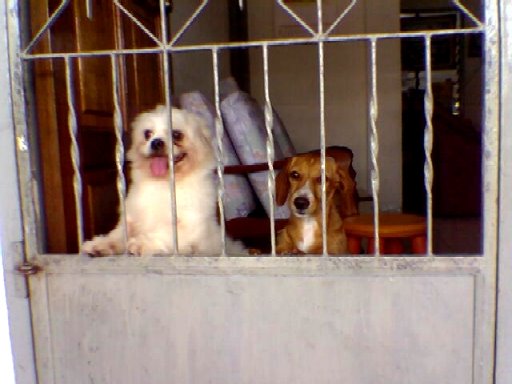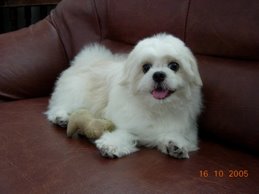Canine Teeth Facts
Dogs' teeth can grind, shred and tear all kinds
of food. This is to make sure he gets as much
nutrition as possible from everything he eats.
Just like humans, they produce two sets. Puppies
have 28 and at around four months they grow their
adult teeth which include molars, bringing them
up to 42.
There are four separate groups of teeth;
incisors, canines, premolars and molars. Each
has a distinctive function. The first, incisors,
are the smallest teeth used mainly for scraping
bones and picking things up. A dog grooms
himself by using these dog teeth to nibble and
remove unwanted irritants. There are twelve
incisors, six upper and six lower.
Secondly, canines, commonly known as fangs, are
what a dog uses to grab a hold of, sometimes
another animal, a bone or a toy. There are four
of these, two upper and two lower on the outside
of the incisors.
Then there are dog teeth which are used in
chewing. As you will notice, your dog takes the
bone or toy from you with his incisors and then
moves it around to the side where he will start
chewing on it. These were what wild dogs used to
rip meat from the bone with. There are sixteen of
them, four upper and four lower, behind their
canine teeth.
Lastly, there are the molars. These back teeth
break down large food like bones or hard
biscuits. There are ten of these, two upper each
side and three lower each side.
Although canine teeth do not normally decay,
they are likely to have gum disease as they age.
This can progress into gingivitis, and other
periodontal diseases if their teeth are not
cleaned. This is more likely if the dog eats wet
food.
There are doggy toothpastes, gels and sprays
easily available nowadays to prevent oral
ill-health. Your vet can assess the condition of
the dog's teeth and recommend appropriate action.
Brushing the teeth last thing at night is a good
habit to develop. It's best not to have him
drink either soon before or after the cleaning.
Putting a little gel or toothpaste on your
finger and allowing him to smell and taste it
will allow him to relax. Then swipe all the
teeth quickly and gently. The gel, spray or
toothpaste acts with his saliva to break down
the tartar. This may take some time, weeks even,
before you feel comfortable introducing the
toothbrush. Start with one or two at a time. Be
consistent, patient, and praise often.
----------------------------------------------------
Methods that work to cure dog bad breath can be
found on our site at Cactus Canyon. When you
learn the methods for how to brush dog teeth,
you can ensure great dental health in your
canine.
http://www.cactuscanyon.com/dog-teethcleaning.htm
EasyPublish this article: http://submityourarticle.com/articles/easypublish.php?art_id=259705














.jpg)






.jpg)

0 comments:
Post a Comment